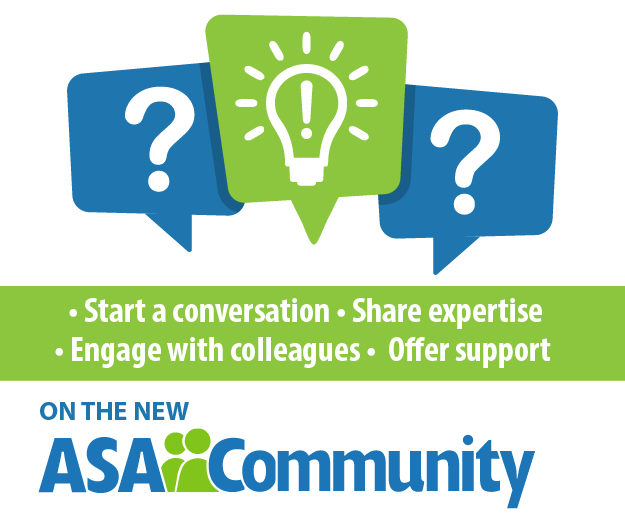Kelly H. Zou, Willis A. Jensen, Dongseok Choi, Yun Zhang (Graduate Student and Guest Contributor), and Barry D. Nussbaum, on behalf of the ASA SPAIG Committee
Previously and recently, the ASA Statistical Partnerships Among Academe, Industry, and Government (SPAIG) Committee has called for fruitful collaborations and partnerships between two or more of these career sectors, particularly in the era of Big Data. With the ASA as a “big tent” organization, SPAIG’s main mission is to “identify, lead, and promote initiatives that foster partnerships between academe and business, industry, and government (B/I/G).”
Students find it increasingly important to gain the width and breadth of statistical skills through effective internship positions. Statistical internships can help build and maintain successful partnerships to prepare the next generation of statisticians and researchers in related fields, as well as to prepare future leaders along these career tracks. Interns may be hired at any stage of their education, but graduate students generally have some advantage in terms of statistical knowledge and programming skills. For advanced internship applicants, some organizations may prefer those who have completed their master’s degrees or PhD-qualifying exams.
Successful systematic internship partnerships between the ASA and a host company have been featured previously (see The Summer Internship Partnership of ASA and Novartis Oncology: A Multi-Win Endeavor). However, despite existing useful tips and annual advertisement of various internship positions via the ASA, many students may still find the search and application process for valuable statistical internship positions bewildering and daunting.
If you are a graduate or advanced undergraduate student in statistical sciences and related fields, these 10 tips may increase your likelihood of getting an internship. Once you have secured and completed an internship, it will be a valuable lifelong experience. (This communication is by no means formal legal advice in terms of compensation, payment, or visa requirements. Foreign students must consult with their respective international students’ and scholars’ offices, as well as the host organization, to ensure legal compliance.)
We hope these tips are helpful and will help you land that dream internship. Good luck!
1. Be Diligent.
Consider starting your search at least half a year before the target starting date of the internship. December of the preceding year may be ideal, because that is when organizations may be completing their planning for the following year’s projects and budget figures. From then on, use the ASA to periodically search for available internship opportunities, which are posted both online and in the December issue of Amstat News. Treat the search process like a job hunt: Read the job descriptions carefully and tailor your résumé for specific internships. Bring your résumé to your school’s career center and ask for professional advice. Résumés may be two or three pages and should clearly state your career goals, educational background, key projects with a brief description of each, software skills, and publications or presentations, if applicable. It’s better to list a variety of projects that cover a wide range of statistical topics, rather than a series of projects on closely related topics. Hiring managers tend to prefer someone who has similar experience, but you never know what will be relevant to the potential internship projects they have in mind. Professional networking tools such as LinkedIn may come in handy. Read the application instructions carefully and be sure to meet deadlines.
2. Be Flexible.
Don’t be too choosy about location or organization. Although an internship may lead to a future job, it also may be a window to a particular career track. Take the opportunity to try something new or to live in a new place. It is important to gain experience, which helps you better know what you are really looking for when it comes time to look for actual jobs.
3. Be Prepared.
Study the hosting organization ahead of time. Read about the specific team on the organization’s website, in the media, and in scientific publications. Ask others what they like about working there. Find out about the good and bad things about working there. This is your chance to learn all you can about the organization you are with. Doing such ‘homework’ in advance will make it less of a surprise during the internship period and easier to decide if you want to be there in the future. Learn about the history of the organization and where it is going.
4. Be Open-Minded.
Think and talk about statistics, as well as the core scope of the work involved, in a different way. For example, orientations or information-sharing sessions may rarely cover statistics or technical topics. Experience-sharing will lead to a smooth transition from school to the internship position, and also help bring back a successful intern for a full-time position. If the hosting organization is not solely in the business of statistics or data analysis, it may focus more on business-related areas such as marketing, finance, or insights.
5. Be Proactive.
During the internship, ask many questions and learn as much as you can. If you don’t know something, find out who knows the answer and ask them. If no one knows the answer, try to figure out the answer by yourself or with your team and then share with others. This is a chance for you to impress your manager and peers and shine. This is also an opportunity to introduce yourself to other staff members. The more contacts you have, the better. Attend intern or networking activities onsite, where interns from different functions mingle—these activities help you explore the hosting organization’s culture more comprehensively. If the manager is at a more senior level, consider identifying a formal or informal mentor who may be both technically savvy and hands-on. It is extremely important to work on your intelligence quotient (IQ) (see “Rising Scores on Intelligence Tests,” American Scientist, and your emotional quotient (EQ) at the same time. Your proactive attitude and technical ability may greatly increase your chances of turning the internship into something further, such as a full-time position.
6. Be Succinct.
Giving an oral presentation and writing a summary report based on an internship project in a particular industry or for the government can be quite different from giving a presentation for a research project in school. As a student, you are trained in and used to developing complex statistical methodology and focusing on technical details. In an internship presentation, it is important to be streamlined and to the point, using short sentences, clear schematic displays, and readable tables. With understanding and support from your immediate manager, aim to focus on reasoning and conclusions, while leaving complex technical details and modeling choices as backup information.
7. Be Reflective.
Organize and document your work well in an accessible area shared by your team and record the key tasks of the internship in your résumé. This is helpful to you during and close to the end of the internship, and it is a huge benefit for future interns if carrying on the same project. The internship project may enhance or enrich your research interest. Regard and treasure your internship as a bridge between academe, industry, and/or government. It’s possible that some ongoing work after your internship may lead to a greater achievement, such as a publication or a further research topic. Share your experiences with other students and professors. Tell them what went well and what didn’t go well so they have a sense about this particular organization or career path. Give useful advice, without revealing any confidential or proprietary information, to future internship applicants.
8. Be Appreciative.
Thank those you have worked with and who have helped you during your internship. Some of them may have taken extra time to help answer your questions. Write them thank-you notes or send emails of appreciation, telling them what you enjoyed about your experience, right after the internship ends. Be specific! If you cite a topic you have worked on, your teammates will remember you better. The end of your internship may not be the end of collaboration with them.
9. Be Hopeful.
If you have gained a great experience and aim to return to that organization as a future employee, stay in touch with those you met during the internship via professional channels such as LinkedIn, conferences (e.g., the Joint Statistical Meetings), and local ASA chapter activities. Some managers may provide references during your formal job searches. Send a brief and well-written note occasionally to let them know how things are going after returning to school. Even though a full-time position may not open up immediately in the area you worked in, you may be able to find opportunities in relevant areas of the same organization. Such an organization will find a space for talented individuals who have already demonstrated their capabilities and enthusiasm.
10. Be Positive.
If the internship lands you a full-time career and a position you love, then congratulations! If an internship makes you never want to do this type of work again, treat it as a learning experience and remain hopeful. Stay positive that an internship or position will come along eventually, and the internship experience will remain to strengthen your technical, communication, and collaborative skills.




Leave a Reply